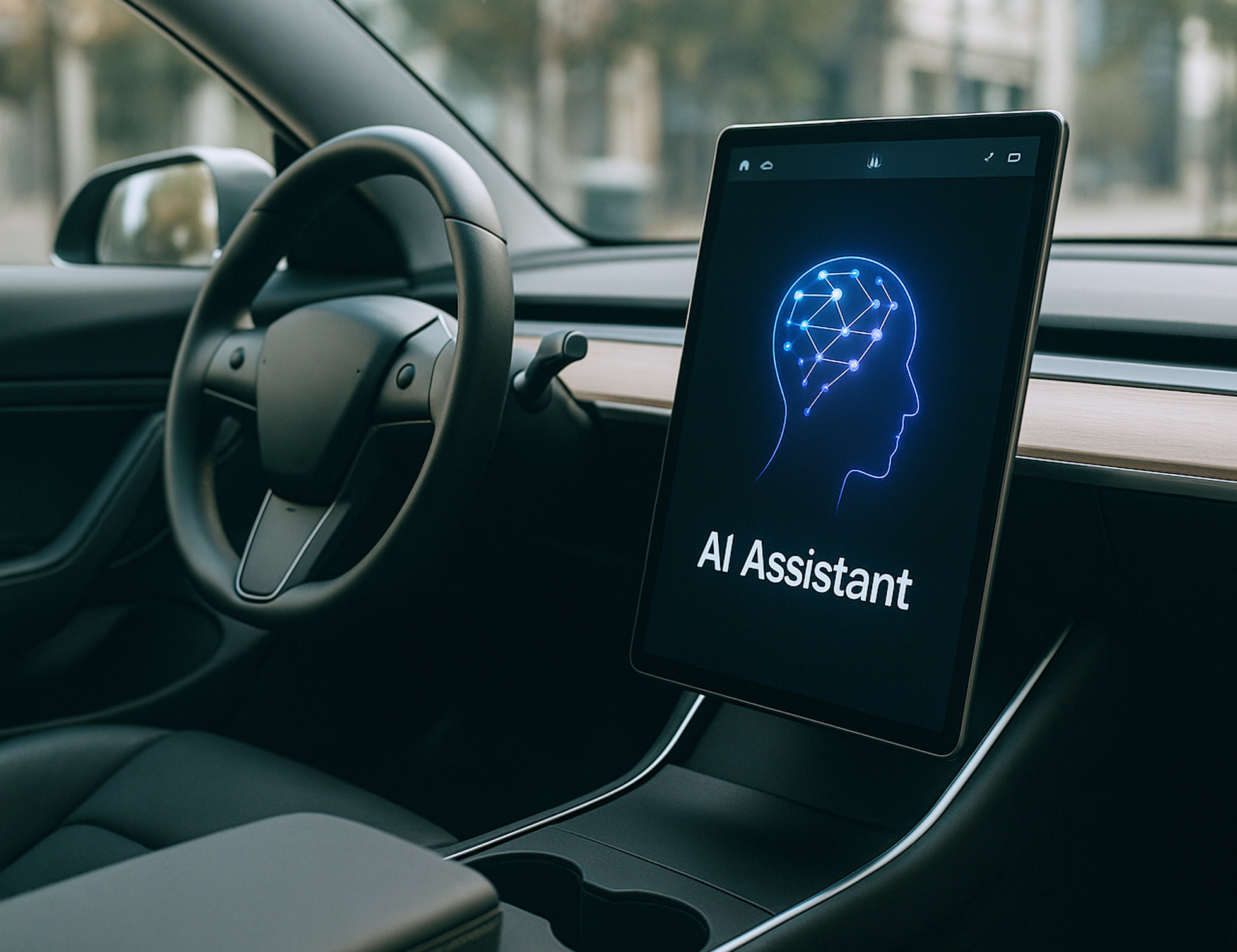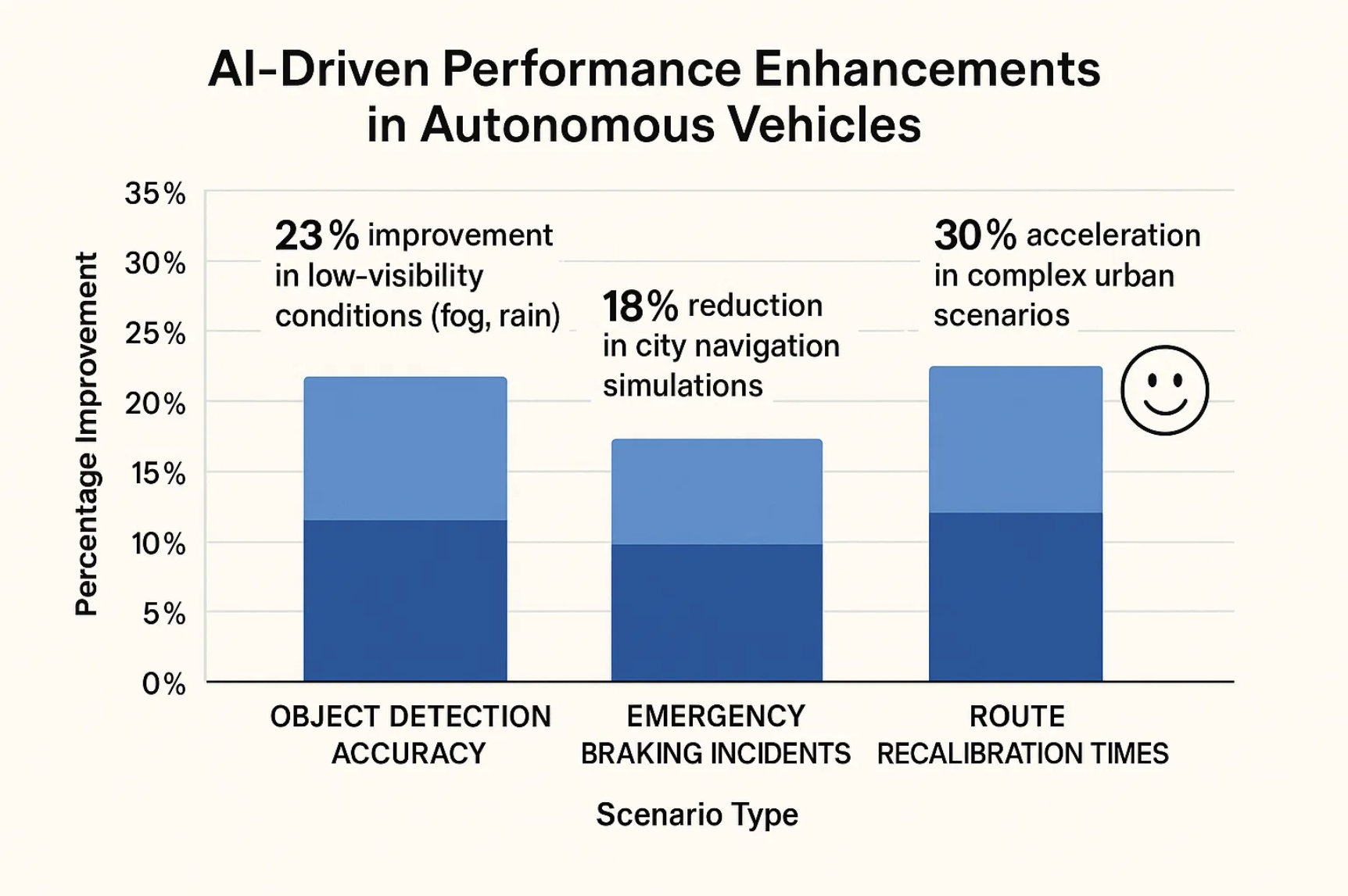AI-First Autonomous Vehicles: How Intelligent Design is Shaping the Future of Mobility Leadership

The dream of self-driving cars has captivated innovators for decades. Yet despite major advances, widespread autonomous deployment remains constrained by real-world unpredictability. Today, AI is the decisive factor moving autonomous vehicles (AVs) from prototype to practical reality, redefining how vehicles perceive, decide, and navigate.
Artificial intelligence stands at the core of this transformation, enhancing every layer of AV systems, from holistic perception to intelligent decision-making to real-time adaptation. At Kenility, we are not only tracking these developments but actively contributing to the technological advances reshaping the future of mobility.
What AI Integration Means for Autonomous Vehicles
Beyond Sensors and Steering
Holistic Perception:
Advanced AI models synthesize information from LiDAR, radar, cameras, and ultrasonic sensors, enabling a dynamic, real-time environmental understanding.
Intelligent Decision-Making:
Reinforcement learning models allow AVs to react to unpredictable scenarios, such as sudden pedestrian crossings or cyclists swerving, with human-like intuition and superior processing speeds.
Seamless Navigation:
AI-driven environmental mapping and real-time route optimization empower vehicles to dynamically adapt to road closures, traffic patterns, and weather conditions.
The takeaway: True autonomy is not achieved by retrofitting AI onto traditional systems. It demands AI-first design thinking across every subsystem.
Global Trends Accelerating AI in AVs
According to McKinsey (2024), the AV market is projected to surpass $556 billion by 2026, with AI contributing to over 70% of total system innovation budgets.
Leading automakers and startups alike are converging on AI-native development platforms to achieve Level 4 and Level 5 autonomy reliably and safely.
Our Development Framework for AI in Autonomous Systems
1. Discovery Workshops: Aligning Mobility Goals with AI Opportunities
At Kenility, every AV project begins with structured AI Opportunity Workshops, focusing on:
- Core perception and recognition needs
- Real-time decision-making constraints
- Regulatory and ethical requirements (ISO 26262, GDPR compliance)
2. Architectures for Continuous Adaptation
Our AV solutions standardize on:
- High-Fidelity Simulation Environments: Training models across billions of synthetic miles before live deployment.
- Real-Time Edge AI Systems: Embedding AI models on in-vehicle chips to achieve sub-50ms reaction times.
- Continuous Learning Pipelines: Enabling deployed vehicles to feed edge-case data back into centralized systems for ongoing model refinement.
3. Cross-Functional AI Teams
Cross-disciplinary collaboration is crucial. At Kenility:
- Systems engineers address perception drift challenges.
- Product owners interpret ROC curves to measure model performance.
- MLOps specialists manage model versioning, testing, and deployment as rigorously as traditional code artifacts.
AI in Action: Production-Grade Outcomes
Real-World Applications
- Sensor Fusion Breakthrough: AI integration improved object detection accuracy by 23% in low-visibility conditions such as fog and heavy rain.
- Decision-Making Enhancements: Reinforcement learning reduced emergency braking incidents by 18% in city navigation simulations.
- Mapping Agility: Real-time AI-driven environmental maps decreased re-routing times by 30% in complex urban scenarios.

Why This Matters to the Future of Mobility
Organizations integrating AI at the core of their AV strategies achieve substantial competitive advantages:
- Accelerated Deployment: High-fidelity simulation and edge learning shorten development and validation cycles.
- Enhanced Safety Standards: Continuous refinement ensures better decision-making under complex edge-case conditions, reducing liability risks.
- Operational Resilience: AI-driven adaptability enables AVs to respond dynamically to real-world uncertainties without manual intervention.
- Regulatory Readiness: Advanced AI models meet evolving compliance standards faster, enabling safer market entry.
- Brand Leadership: Pioneering AI-native AV solutions elevate brand trust and consumer loyalty.
Conclusion: AI-First Thinking Will Define Tomorrow’s Leaders
The next frontier in autonomous vehicles is not about adding more sensors—it is about embedding AI at every layer of system design. Companies that embrace AI-native development today will lead tomorrow's transportation revolution.
At Kenility, we do not treat AI as a complement; we embed it as the operating system of autonomous innovation.
Let’s build the future of mobility together.
Ready to innovate your AV strategy with AI at the core?
Contact us: hello@kenility.com | kenility.com
